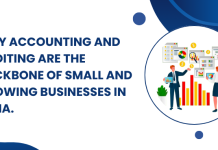Accounting is a crucial part of running a business, and it’s an important skill to have in the ever-growing world of entrepreneurship. In order to give yourself an edge as an entrepreneur, you need to know how and why to handle accounting effectively.
What Is Billing In Accounting?
The billing is the process of recording and accounting for expenses incurred by a business. This includes recording and categorizing expenses, preparing bills or invoices; billing clients or customers, and ensuring accurate and timely financial reporting.
Different Types Of Billing
Performance Billing
It is used when a company wants to charge customers for specific results or outcomes. For example, a company may charge customers based on the number of sales they make or the amount of output they produce.
Project Billing
It is used when a company needs to bill for a service that was not provided in the past or when the service involved was not provided on a regular basis. For example, a company may bill for consulting services that were provided in order to help it improve its business strategy.
Time & Labor Billing
It is the most common type of billing in accounting Software. This type of billing records the hours that employees spend working on behalf of your business. This information is used to calculate wages and benefits for your employees.
Material Billing
Material billing records the number of materials that your business purchases. This information is used to calculate your business’s budgeted expenses. Material billing can also help you track inventory levels.
Supplies Billing
Your supplies bill records the cost of supplies that your business uses. This information is used to calculate depreciation costs and other financial metrics related to your company’s assets. Supplies billing can also help you keep track of your company’s inventory levels.
Project-Based Billing
It typically works like this: a business agrees to perform a certain task or series of tasks, and then charges customers based on the amount of work completed. For example, a construction company might charge customers based on the number of hours worked on a project.
Hourly Billing
With hourly billing, a business bills customers based on the number of hours worked each day, week, or month. This type of billing is often used by businesses that offer services such as plumbing repairs or car repair services.
Fixed Fee Billing
With fixed fee billing, a business charges customers a set amount for every task or service they perform. This type of billing is often used by businesses that offer products or services with set prices (for example, software companies that sell software licenses).
Recurring Billing
It is perfect for businesses that need to keep track of monthly or yearly spending. With this type of billing, customers are charged on a regular schedule, like every month or year. This means that customers know exactly how much they’re spending each month, and they can plan their finances accordingly.
Subscription Billing
With subscription billing, customers are charged a fixed fee every month or year for the use of your service. This type of billing is popular among services such as Netflix and Hulu, which require a monthly or yearly subscription fee to use their services.
Usage Billing
With usage billing, customers are charged based on how much they use your service. This type of billing is popular among services such as Facebook and Gmail, which allow users to access specific features or content for a set amount of time each month or year.
Advantages Of Billing
- Receive payments from the customers
- Payment information can be used to improve cash flow and profitability
- Billing in accounting provides businesses with valuable feedback on their customer base
- This feedback can be used to improve marketing efforts and customer service levels
- It can also help businesses plan for future changes in customer demand.
The Billing Process In Accounting
A “billing process” in accounting refers to the steps necessary to generate invoices and receive payments from customers. This process begins with creating an estimate of the cost of a project or task, followed by gathering necessary information (such as customer names and addresses) and preparing bills. Once bills are created, the accounting team must track payments and maintain records of all transactions.
The following is a step-by-step procedure for billing in accounting:
- Begin by estimating the cost of a project or task. This involves understanding what will be required to complete the work and estimating how much time and resources will be needed.
- Gather necessary information, such as customer names and addresses.
- Prepare bills according to the specific needs of your company. Bills can include items such as labor costs, materials used, and overhead expenses.
- Track payments and keep records of all transactions. This includes keeping track of when payments are due, who made the payment, and any outstanding debts or credits.
Read more useful related content:
How Does Marg Billing Software Assist You?
The billing process in accounting can be an unnerving task, but with the right tools and guidance (Marg Billing Software), it can be made as smooth and simple as possible. We will also cover common pitfalls to avoid when billing clients and provide tips on how to create invoices that are both accurate and appealing to customers.
- Filing GST Returns
- Collecting Online Payments
- Easy and Fast Billing
- POS system with touch screen
- Manage all types of bank transactions
- Payment reminders
- Barcode scanning
- Streamline Inventory
FAQs On Billing
Are all costs billed in one lump sum?
Costs are typically billed in sequence, with the most recent activity billed first. This allows for a more accurate and timely financial report.
How can I determine my monthly rate?
You can easily determine your billing rates on India’s no.1 Marg billing software.
What is the billing cycle?
The billing cycle is the period of time, also called a cycle or billing period, from the day that an invoice is issued, up to and including the day an account has been paid.
What is the difference between billing and invoicing?
Billing is the process of submitting an invoice to a customer or client. Invoicing is a formal document that formally notifies a customer of the charges they are responsible for and when those charges are due.






